Norfolk or Suffolk – which is better for a holiday?
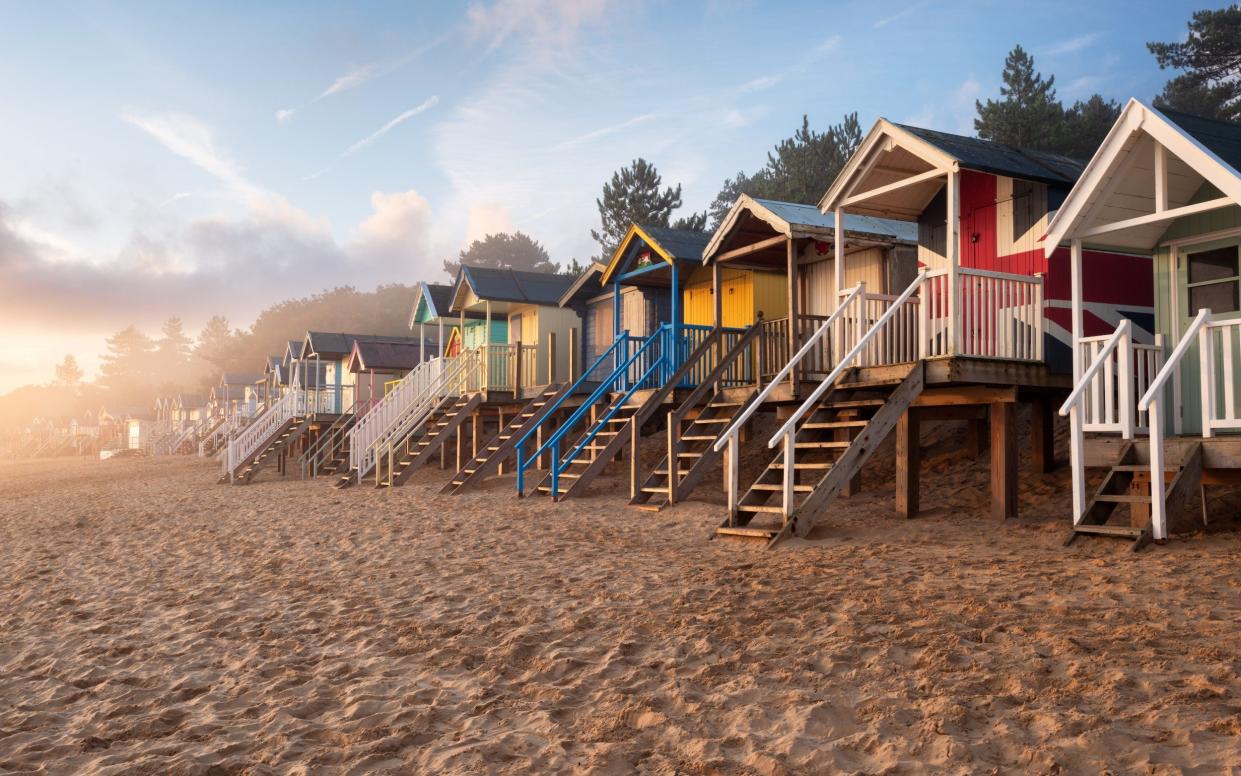
Both Norfolk and Suffolk are fine options for a traditional seaside holiday, being among the driest and sunniest counties in Britain, with no shortage of old-fashioned resorts, sandy beaches, comely villages and wildlife-watching opportunities.
But which county rules the East Anglian roost? Our writers Sophie Butler (representing Norfolk) and Martin Dunford (representing Suffolk) slug it out.
Seaside
Norfolk
Both regions have wonderful coastlines, but it’s those glorious swathes of golden sand that put Norfolk in the number one spot. The beach at Holkham is a top pick and there’s always a spot to call your own, no matter how busy the beach car park. Wells-next-the-Sea is also popular, especially with families who don’t want to walk too far. It’s backed by colourful beach huts and pine woods, with the plus points of dog-free zones and patrolling lifeguards.
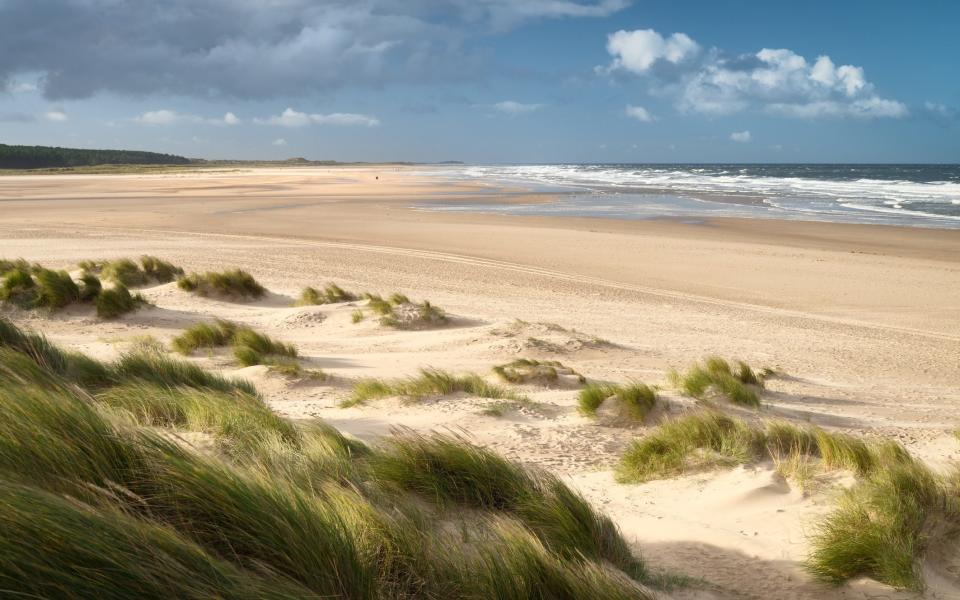
To the west, shallow sand pools at Brancaster provide hours of fun, while Hunstanton (known as “sunny Hunny”) is the best pick for romantic sunset walks. The Blue Flag beaches of Sheringham and Cromer are good for swimming and sandcastles, and for a quieter option try Waxham further east, where seals bask on the shoreline. Prefer shingle? Norfolk is still your go-to. Cley-next-the-Sea is an atmospheric stretch of sea-smoothed stones backed by reedbeds and marshland.
Suffolk
Norfolk definitely has the best kiss-me-quick resorts but nowhere can match the delights of Southwold’s pier, where the quirky machines of the ‘Under the Pier’ show are unique and the food is a cut above the usual seaside fare. Cross the river on the foot ferry to neighbouring Walberswick, home to media luvvies, film directors and another nice beach. Sadly it no longer hosts the World Crabbing Championships, which simply became too popular, but remains a good place for a spot of solitary crabbing before heading off to Dunwich, where you can enjoy excellent fish and chips on the beach, courtesy of the legendary Flora Tea Rooms.
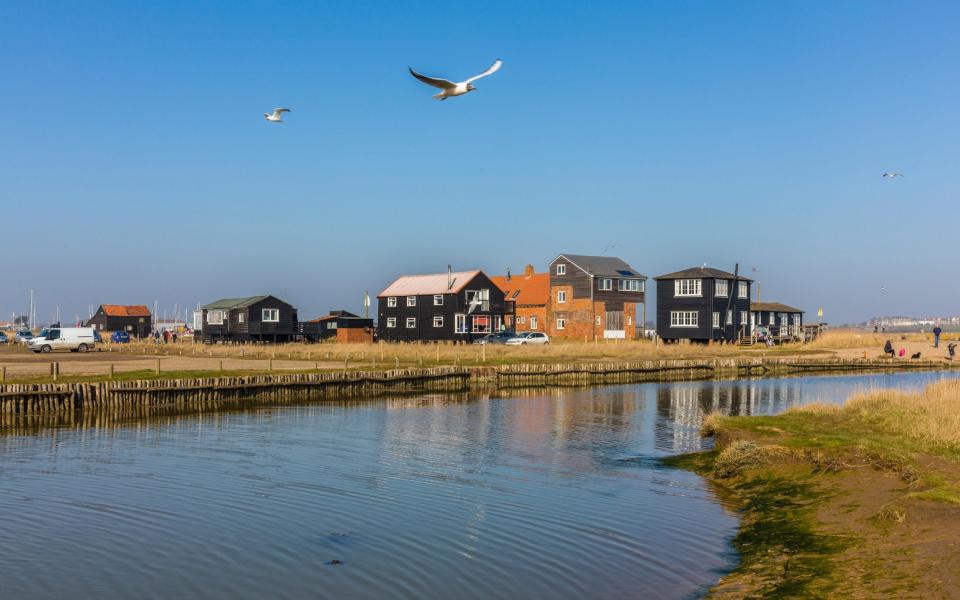
Further south, well-heeled Aldeburgh offers more refined seafood at The Suffolk on the high street, while you should also make a trip to sleepy Orford, where the national nature reserve of Orford Ness gives you the chance to combine a spot of birdwatching with a visit to the former buildings of the atomic weapons research establishment that once operated from here.
Food and drink
Norfolk
Norfolk’s deep-rooted farming and fishing industries ensure a year-round abundance of unbeatable seasonal produce. From March to October, you can dine on succulent crab from the chalky seabeds of Cromer, while Brancaster is known for its exceptional mussels, harvested through the winter months. Mouthwatering cheeses have evocative names, like Binham Blue and Wensum White, and Norfolk’s bees (which forage in the lavender fields and salt marshes) produce delectable honey.
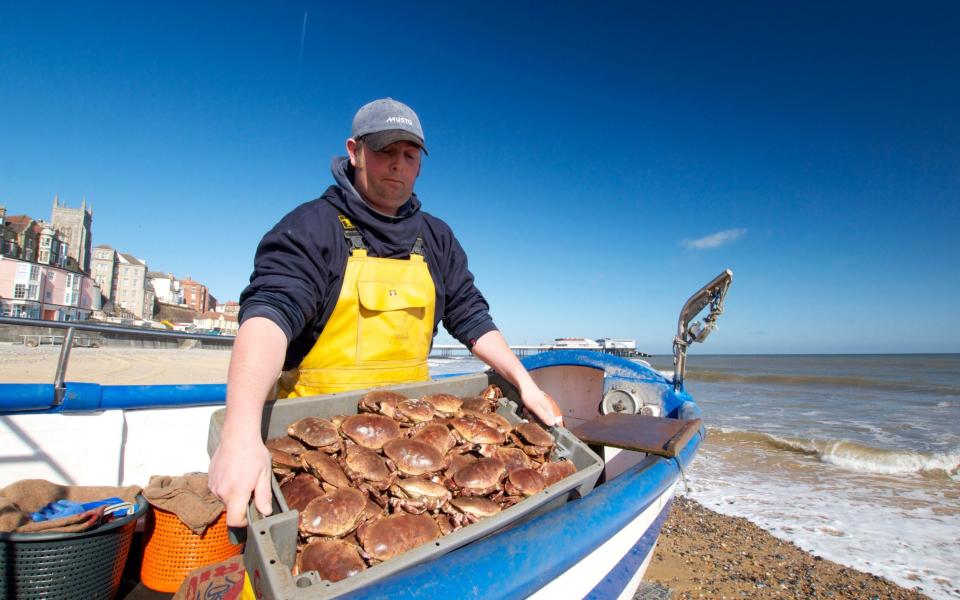
Award-winning craft beers made by small artisan breweries derive from the malted barley grown in the region, while succulent venison comes direct from the deer parks of its big estates. In the summer you can pick your own soft fruits – plums from Burnham Thorpe or strawberries from Sharrington – and when it comes to eating out there are standout fish-and-chip restaurants (Eric’s at Thornham or No1 Cromer), gastro pubs (The Gunton Arms in Thorpe Market or Sculthorpe Mill near Fakenham) and four Michelin-starred restaurants to Suffolk’s solitary one.
Suffolk
Norfolk may have more Michelin stars, but what if you just want a simple pub lunch? Gastropubs like the Bildeston Crown, Sibton White Horse and Black Lion in Long Melford are just a few places that regularly serve restaurant-quality food at pub prices, and the legendary The Unruly Pig, just outside Woodbridge, has been named Britain’s best gastropub.
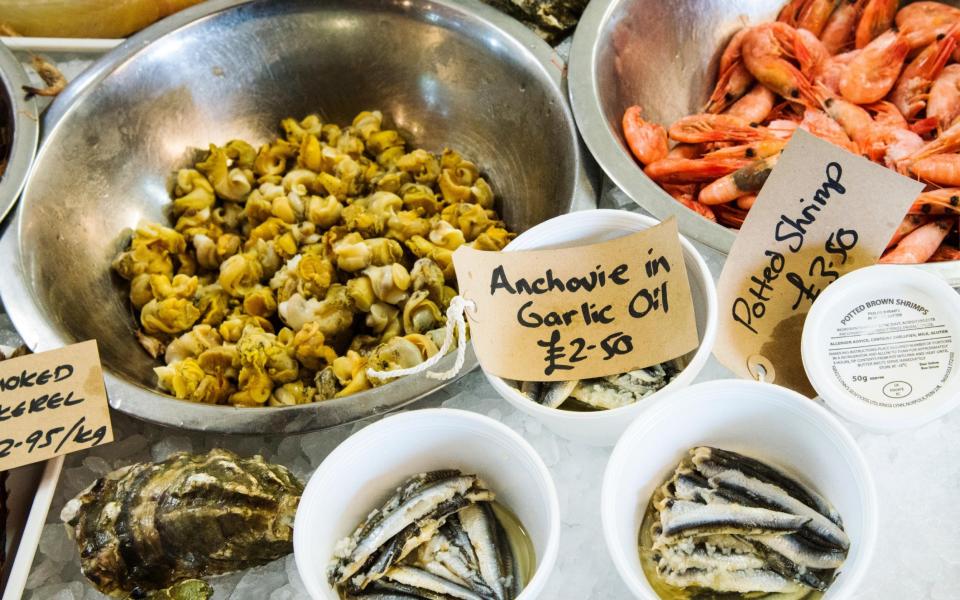
As for local produce, nothing beats the fish and seafood you can buy direct from the huts on the beach at Aldeburgh, much of which finds its way onto the menu at The Suffolk – the county’s newest and best restaurant with rooms – or the legendary Aldeburgh Fish & Chip Shop, regularly voted the UK’s best chippy. Other delights from Suffolk’s bountiful larder include genuinely free-range pork from the happy piggies of Blythburgh and the renowned Baron Bigod cheese from Fen Farm Dairy in the Waveney Valley – now a fixture in any self-respecting UK cheese shop. Check it all out at the wonderfully appetising Suffolk Food Hall, just outside Ipswich.

Attractions
Norfolk
While Norfolk’s chief attraction is the great outdoors, its stately homes take some beating. The interiors of 18th-century Holkham Hall are impressive enough, even without the outstanding collection of art they contain. There’s a hands-on exhibition, high rope courses, walled garden and bike hire. Another to visit is Houghton Hall, built by Britain’s first prime minister Sir Robert Walpole, which has a stunning walled garden. The National Trust’s Norfolk properties – Blickling, Oxburgh and Felbrigg – also make a great day out.
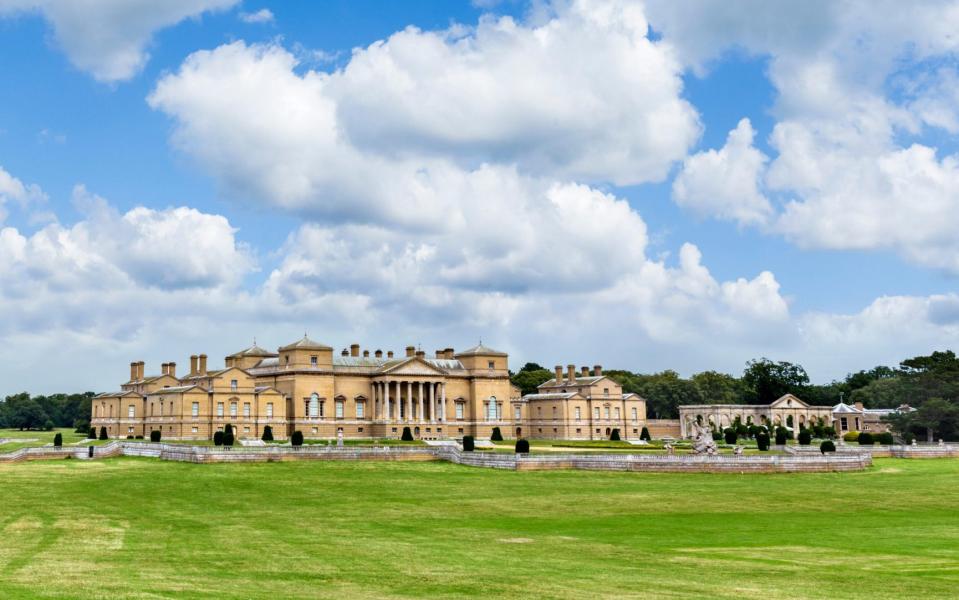
Suffolk has its share of seals, but Norfolk has the largest seal colony in the UK, with boat trips available to Blakeney Point from Morston Quay. Railway fans can chug from Holt to Sheringham on an old-style steam train and, while Suffolk might have some impressive Norman castles, Norwich holds the trump card with its superb 900-year-old castle keep. Both regions have beautiful medieval churches too, but when it comes to quantity and quality, Norfolk comes out on top once again.
Suffolk
Norfolk’s country estates are pretty impressive, but Suffolk can more than hold its own when it comes to attractions. For example, Benjamin Britten’s former home, The Red House, just outside Aldeburgh, is perhaps East Anglia’s greatest cultural draw. There you will find a fabulous array of displays relating to the composer, alongside his superb collection of 20th-century British art.

Consider, too, the gallery at Gainsborough’s House in Sudbury, which recently received a multi-million-pound makeover, and the Constables and Gainsboroughs at Ipswich’s Christchurch Mansion. To delve into the town’s equestrian heritage, head to the horse-racing memorabilia at Newmarket’s National Horseracing Museum. With regards to historic attractions, there is nothing in Norfolk to touch the concentration of sights in Framlingham, whose magnificent castle is complemented by perhaps the finest array of Tudor tombs you’ll ever see, in the nearby church of St Michael.
Countryside
Norfolk
Contrary to common misconception, Norfolk, with the exception of its big-sky Fenland landscapes, is not flat. Venture a few miles back from the coast to discover a gently undulating hinterland of ancient woodland, wildflower meadows and arable fields. To the east are the wildlife-rich waterways of the Broads and to the west the pine-studded grass and heather heathland of The Brecks.
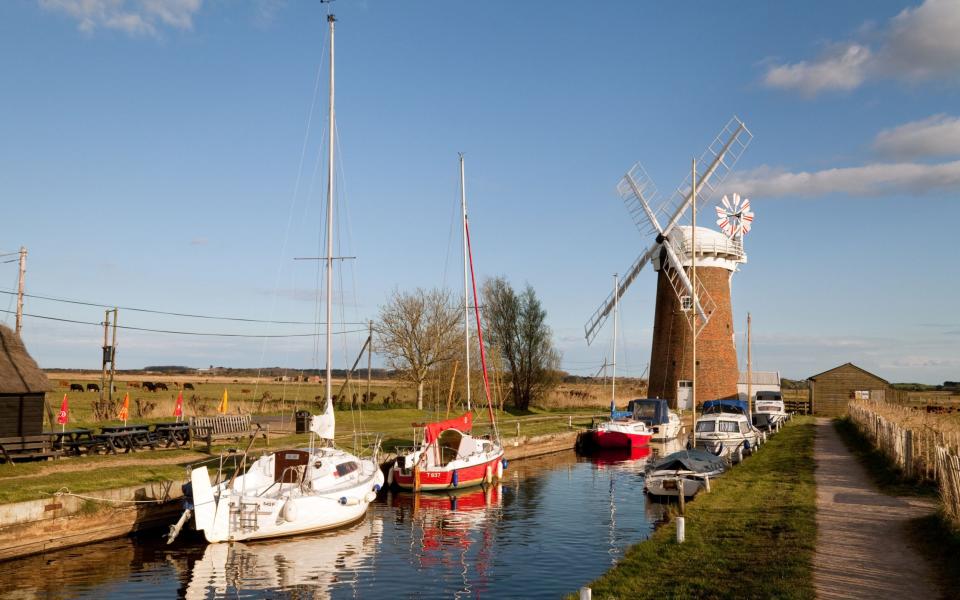
And while Norfolk’s rural market towns and villages may not have the “wow” factor of those in Suffolk, its flower-decked cottages, snugly beamed pubs, weeping willow duck ponds and flint-built medieval churches have an unshowy, timeless charm. By contrast, the 18th-century landscapes of its big estates, grazed by deer and cattle, are designed to impress. Best to abandon the sat nav and lose yourself in the leafy tangle of lanes and byways. Or better still, abandon the car altogether and head out along the footpaths and cycleways of the bosky Wensum and Bure river valleys.
Suffolk
Despite its closeness to London, Suffolk remains a thoroughly rural county, with Ipswich and Bury St Edmunds about as metropolitan as it gets. Instead, you come to Suffolk for the gentle countryside and the villages in between, particularly the county’s famous medieval wool towns – timbered, time-warped villages whose former prosperity is usually signalled by an outsized church. Norfolk’s has its own beauties, but they don’t quite have the wow factor of places like Lavenham, Long Melford and Clare, whose guildhalls, cottages and mansions knock the socks off anything north of the border.
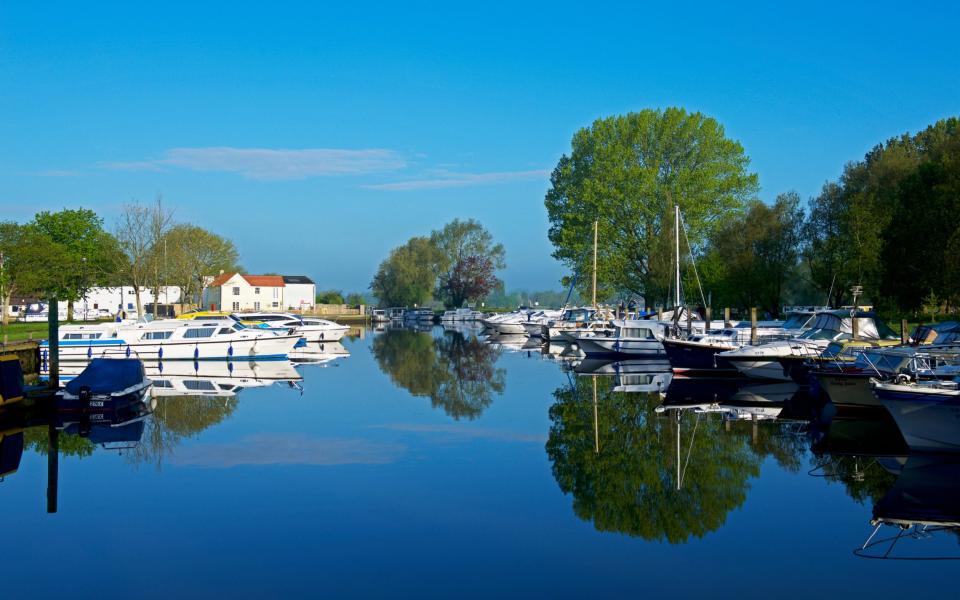
Furthermore, Norfolk is famous for its rivers and broads, but the most beautiful and undiscovered river in the whole of East Anglia is arguably the Waveney, which forms the border between the two counties, and is best explored from the Suffolk side, using the affable market towns of Bungay and Beccles as a base for a spot of the wild swimming: a regular pastime of local author Roger Deakin, who popularised the now-vogueish pastime in his book Waterlog.
Accommodation
Norfolk
Norfolk’s strength lies in its variety of places to stay. New glamping spots crop up regularly – this summer Pensthorpe nature reserve, near Fakenham, opens its doors to overnight visitors with a clutch of fairy light-festooned bell tents. At the other end of the scale, the county’s seafront grande dame The Blakeney Hotel is a family favourite. For spa treatments, it’s Congham Hall near Kings Lynn and for a traditional inn with rooms in a lovely market town, The Hoste Arms in Burnham Market is a top pick.
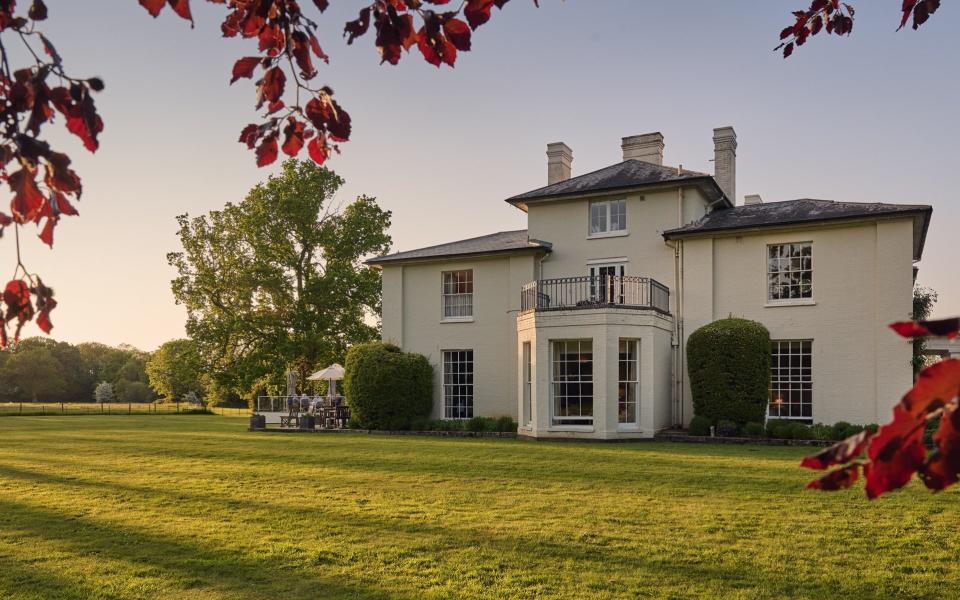
So far, so similar to Suffolk, but Norfolk has a unique stand-out: The Gunton Arms in Thorpe Market, where walls are hung with big-name artists including Damien Hirst and Tracey Emin. And for those who prefer a self-catering cottage with character, the National Trust offers far more rental properties in Norfolk than Suffolk. Whether a tiny converted chapel for two in the grounds of the Oxburgh Estate or an historic 17th-century flint-built bunkhouse sleeping 22 on the harbourside at Brancaster Staithe, there’s something to suit all tastes.
Suffolk
East Anglia in general has been boosted by the UK’s accommodation revival in recent years, but Suffolk has perhaps benefited more than most, with the result that its towns are now well-stocked with decent hotels and B&Bs – something that can’t always be said of Norfolk. There are reinventions of existing historic businesses, like the fabulous Angel Hotel in the heart of Bury St Edmunds, alongside new small businesses run by passionate folk who swear by Suffolk and all it has to offer – for example, the dinky Five Acre Barn B&B on the outskirts of Aldeburgh. Even the relatively humdrum county town of Ipswich has a couple of excellent and contemporary hotels, including The Salthouse Harbour, at the centre of the resurgent waterfront district, and Kesgrave Hall, a boutique country house with spa on the edge of the town).

Meanwhile, regional pub groups like Chestnut Inns have re-purposed old boozers like The Packhorse near Newmarket and The Weeping Willow near Bury, whose cabins with hot tubs make for a unique pub stay. Indeed, for those who like a cabin, there is lots to choose from in Suffolk, from the luxury lodges at Blythe Rise Stays, not far from the funky country town of Halesworth, to the upscale and very comfortable barns and shepherds huts at Retreat East, near Ipswich.
Peace and quiet
Norfolk
Anyone who thinks that Suffolk is more peaceful than Norfolk hasn’t marvelled at the ease of finding a blissfully isolated patch of beach on a glorious sunny day in peak holiday season. Or found themselves strolling along the long-distance Peddars Way without a soul in sight. True, the A149 coastal road can get busy, but the upside is that hardly a mile inland are bucolic backroads which, apart from the occasional cyclist, are totally empty and make easy springboards for traffic-free forays to the coast.
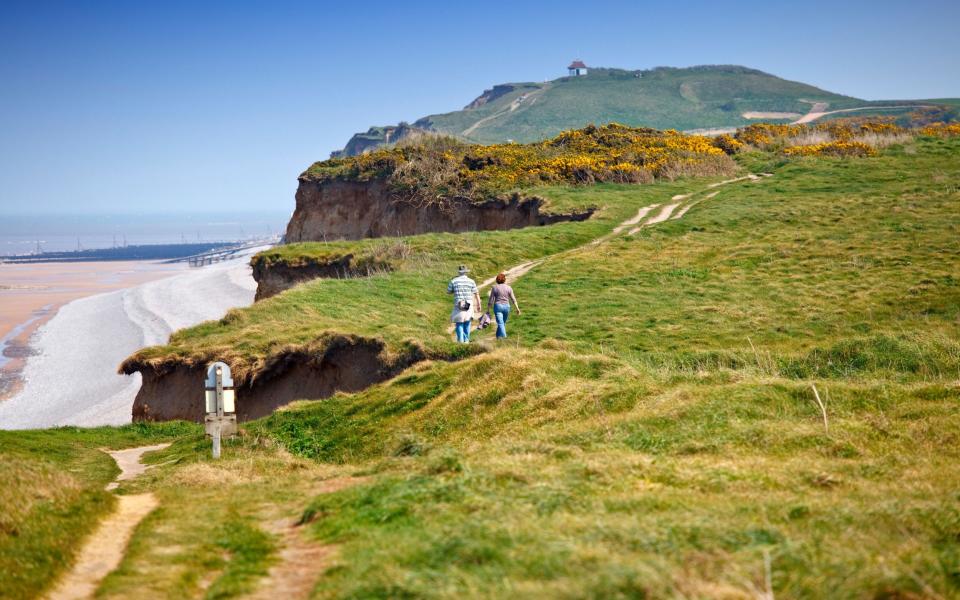
For quieter days out, forget the big stately homes and theme parks, and head instead to the 12th-century priory of Binham with its fascinating history, tiny Langham dome, which tells the intriguing story of Norfolk’s role in the Second World War, or Castle Rising Castle, one of the best preserved medieval keeps in England. Or perhaps enjoy a quiet picnic among the ruins of North Elmham Chapel, the site of a Saxon cathedral, or at Castle Acre with its stunning 11th-century priory, castle and bailey gate.
Suffolk
There’s no doubt that of the two counties, Suffolk is the most peaceful. Beautiful they may be, but The Broads have been full for years, and of course everyone knows that the road that traverses the fabled North Norfolk coast is regularly crammed with Hooray Henrys in Chelsea Tractors. The Suffolk Coast, on the other hand, is set well apart from the main A12 and as a result always feels less congested, with far fewer people passing through.
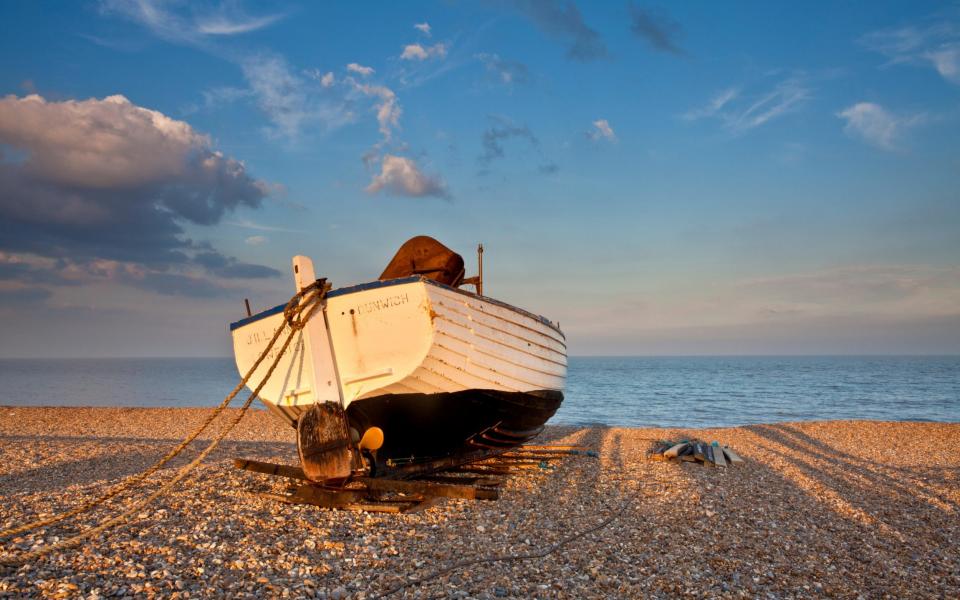
Even popular resorts like Southwold and Aldeburgh sit at the end of a single road that goes nowhere else, and you sometimes have to be extra determined to reach the places in between – coastal villages like Dunwich, much of whose medieval ruins lay beneath the sea, or sleepy Orford, whose multiple charms (including a renowned fish restaurant and various offshore spits and islands) attract relatively few visitors. You can explore all this on the Suffolk Coast Path, which runs from Felixstowe in the south to Lowestoft in the north: this can be busy near the RSPB reserve of Minsmere, between Aldeburgh and Southwold, but on other parts you will scarcely see a soul.
Closing statements
Norfolk
While both Norfolk and Suffolk are fabulous places to visit, there’s no doubt in my mind which region has the edge. Norfolk’s beaches are second to none, its countryside is idyllic, it has a sense of history which rivals anything its neighbour can offer and we haven’t even started on which county has the better football team…
Suffolk
So why choose Suffolk over Norfolk? Well, if you live in London, it’s closer, with some of its most appealing corners less than two hours from the capital. It’s also a gentler, more undiscovered county, with less of a tourism legacy and perhaps a subtler charm than its northern neighbour.


